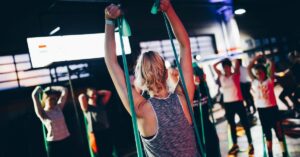Expert Insights: The Most Overlooked Strategies for Injury Prevention and Effective Recovery

Expert Insights: The Most Overlooked Strategies for Injury Prevention and Effective Recovery
In the world of sports, there lies a persistent truth: injuries are not just unfortunate accidents; they are often the result of our own oversights and misconceptions. As someone who has spent countless hours on the sidelines watching athletes—some of whom I’ve known since they were kids—it’s evident that while many focus on rigorous training and performance enhancement, injury prevention often takes a backseat. So, what are the strategies that too many athletes overlook? Let’s dive deep into the less glamorous side of sports to uncover these vital insights.
The Importance of a Holistic Approach
First and foremost, let’s talk about the big picture—injury prevention isn’t just about stretching and warming up. It requires a holistic approach that incorporates various elements of an athlete’s lifestyle. Whether you’re a weekend warrior or a seasoned pro, understanding how your body works in conjunction with your training routine can be a game-changer.
Understanding Your Body’s Signals
One of the most overlooked aspects of injury prevention is simply listening to your body. It sounds simple, doesn’t it? Yet, many athletes, myself included, have pushed through discomfort only to find ourselves sidelined for weeks—if not months. I remember a time when I ignored that nagging pain in my knee, thinking it was just a phase. Spoiler alert: it wasn’t.
Experts suggest that athletes should be trained not just in physical skills but also in body awareness. This means recognizing and interpreting signals from your body, such as fatigue, persistent soreness, or any unusual sensations. Keep a journal, if you must, detailing how you feel after training sessions. You might be surprised at what patterns emerge.
Cross-Training: More Than Just a Buzzword
Cross-training is often discussed, but it’s frequently misunderstood. Many athletes think of it as a way to maintain fitness when they can’t train in their primary sport. However, the real value lies in its preventive capabilities. By engaging in different forms of exercise, you can develop a more balanced body and reduce the risk of overuse injuries.
For instance, a runner can benefit from swimming or cycling, which work different muscle groups while providing a break from the high-impact nature of running. And let’s be honest—who doesn’t love a good dip in the pool? Plus, it can be a refreshing change of pace.
Strength Training: A Non-Negotiable
Many athletes still shy away from strength training, fearing it might bulk them up or affect their agility. That’s a myth that needs to be debunked. Strength training is crucial not only for performance enhancement but also for injury prevention. It strengthens muscles, tendons, and ligaments, making them more resilient to the demands of your sport.
Focus on Functional Strength
It’s important to shift the focus toward functional strength—movements that mimic the actions you perform in your sport. For example, a basketball player should incorporate exercises that replicate jumping and lateral movements. But don’t just take my word for it; experts recommend incorporating exercises like squats, lunges, and core stability workouts into your routine.
Nutrition: Fueling Recovery
Nutrition often plays a role that’s either overlooked or underestimated in recovery and injury prevention. I once chatted with a dietitian who remarked that recovery begins with what you put on your plate. It struck me as a simple yet profound truth.
Eating a balanced diet rich in vitamins, minerals, and macronutrients can significantly influence your recovery time. Make sure to include:
- Lean proteins for muscle repair
- Whole grains for sustained energy
- Fruits and vegetables for essential vitamins and antioxidants
- Healthy fats for joint health
Hydration is equally crucial. It’s easy to forget to drink enough water, especially during intense training sessions. Dehydration can lead to muscle cramps and fatigue, increasing the risk of injury—so keep that water bottle handy!
The Role of Sleep
Ah, sleep—the often-neglected hero of recovery. You might be surprised to learn that many athletes sacrifice sleep for extra training or social activities. I recall a conversation with a former Olympic athlete who claimed that sleep was as important as any workout in their training regimen. I chuckled, thinking, “Sure, but have you ever tried to balance a full schedule?”
Nonetheless, the science backs it up. Studies show that athletes who prioritize sleep experience better overall performance, quicker recovery times, and a reduced risk of injuries. Aim for 7-9 hours of quality sleep per night, and you might just find yourself feeling rejuvenated and ready to take on whatever challenges come your way.
Mindfulness and Mental Health
Mental health and injury prevention might seem like an odd pairing, but they have a significant correlation. Stress and anxiety can manifest physically, leading to a tightness in muscles and an increased chance of injury. Incorporating mindfulness practices, such as meditation or yoga, can help athletes manage stress and maintain focus.
There was a time when I thought meditation was just for yogis and hippies, but after giving it a shot, I quickly realized its benefits—both on and off the field. It doesn’t have to be a lengthy session; even a few minutes of focused breathing can enhance your awareness and improve your overall mental state.
Visualization Techniques
Visualization is another powerful tool that can aid in both performance and injury prevention. Imagine this: a swimmer visualizes their race, picturing every stroke, turn, and breath. This mental rehearsal can enhance confidence and readiness, reducing the likelihood of mistakes that could lead to injuries. Plus, it’s a lot cheaper than therapy!
Recovery Techniques: Beyond Ice and Rest
When it comes to recovery, most people think of rest and ice, but there are plenty of overlooked strategies that can speed up your recovery process. Let’s explore a few of these lesser-known techniques that could make a big difference.
Active Recovery
Active recovery involves low-intensity exercises that promote blood flow without putting additional strain on your body. Think of it like a gentle stroll after a long run—just enough to keep things moving without overdoing it. Activities like walking, light cycling, or even yoga can help flush out toxins and facilitate recovery. I once spent an entire Sunday doing “active recovery” by wandering around a local farmers’ market. Who said recovery couldn’t be fun?
Foam Rolling and Self-Myofascial Release
Self-myofascial release, or foam rolling, is another technique that’s often brushed aside in favor of more traditional methods. Yet, it can work wonders in alleviating muscle tightness, improving flexibility, and promoting blood circulation. It’s not a magic bullet, but it’s certainly a worthy addition to your recovery toolbox. Just be prepared for those initial rolling sessions to feel like a mini torture session—your muscles will thank you later.
Consistency is Key
It’s easy to get caught up in the hustle and bustle of training, but consistency is the bedrock of both injury prevention and effective recovery. Incorporating these strategies into your daily routine might take some time and effort, but the long-term benefits are well worth it. Remember, it’s not about perfection; it’s about making incremental improvements that add up over time.
Setting Realistic Goals
When implementing these strategies, it’s crucial to set realistic goals. Expecting to overhaul your entire routine overnight is like expecting a marathon runner to sprint a 100-meter dash. Instead, focus on small, manageable changes—like adding a foam rolling session after workouts or dedicating one day a week to cross-training.
Injury Prevention: A Lifelong Commitment
As I reflect on my own experiences in sports, it’s clear that injury prevention is not a one-time effort but a lifelong commitment. Athletes must adapt and evolve their strategies as they progress in their careers, taking into account their changing bodies and the demands of their sports.
Consider consulting with professionals—physical therapists, trainers, or sports nutritionists—who can offer personalized insights tailored to your specific needs. (Trust me; it’s better than relying on your buddy who “knows a thing or two about fitness.”)
Conclusion: The Road Ahead
In the end, the most overlooked strategies for injury prevention and effective recovery are often the simplest ones. By listening to your body, embracing cross-training, prioritizing strength training, nourishing yourself properly, getting enough sleep, and incorporating mindfulness, you can significantly reduce your risk of injury while enhancing your overall performance.
As athletes, we often seek the next big thing—the latest training technique or cutting-edge equipment. Yet, it’s the foundational strategies that often make the most significant impact. So, let’s commit to these overlooked strategies, ensuring we stay healthy, active, and ready to tackle whatever comes our way—because, at the end of the day, a healthy athlete is a happy athlete.





